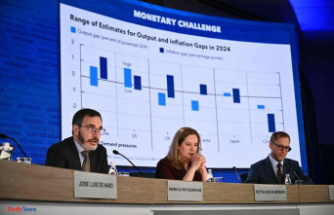It’s already an established fact that business today has become extremely consumer-focused, something you turn a blind eye to at your own peril. Without focusing on how to serve or treat your customers, you’re bound to fall behind your competitors inevitably. Therefore, Customer Relationship Management (CRM) is one of the crucial components that are used to heighten your business, enabling you to keep a better track and interaction with your consumers.
But, implementing CRM can be a complex process that requires keeping track of a lot of moving parts. CRM softwarecan certainly help, but you also need a plan to put this CRM into proper usage, in order to create a solid framework that will effortlessly support all your business efforts.
Most of us have already heard of “The Eight Building Blocks of CRM” by Gartner, where he has already laid a framework.
The report overview notes that, “As observed in conversations with over 200 organizations, we found that CRM leaders who can address all eight blocks . . . are more successful than those who put too much weight on a few of the blocks or miss some altogether.”
Let’s focus on the features that matter for a better understanding of how CRM works:
Vision: What Gartner says, “Understand the guiding principles of successful customer-centric strategies to help them develop a vision of what their organization wants to deliver to customers.”
Clearly, ‘Vision’ holds the most value among the eight building blocks, and somehow, the most challenging one. There is no step-by-step process to create a vision but the final outcome should be more specific. So, in order to effectively build a vision, a company needs to follow these objectives:
·To have a better understanding of what CRM is
·Getting a grip on CRM vision
·Foster a culture that holds up to this Vision
·Communicate the CRM vision to the employees
Strategy: Once your vision is set, your next building block is “strategy”, the one which can help your company to implement the vision. Simply put, it means developing a strategy to turn the customer base into an asset. This involves setting certain goals and objectives into determining how resources will be put to use in order to interact with the consumers.
Organizational Collaboration: Offering a ‘customer-centric understanding’ across the organization to ensure that employees, partners and suppliers work together to deliver customer value. Ongoing change management is the key challenge.
Information and Insight: A successful CRM demands the creation of right amount of information flow across the organization as well as tight integration between operational and analytical systems. To achieve the CRM objectives, the sharing of customer information must be a part of the strategy within the organization. Listed are the ways to determine the same:
·What channels the customer should use
·What kind of products should be sold to the customers
·Whether the focus should be on increasing customer satisfaction, etc.
It’s necessary to keep in mind that customer information is the foundation of any CRM program.
Metrics: Monitoring all levels of CRM indicators only to turn customers into assets is very important but it is said that only a quarter of enterprises measure before implementation. Without a performance management framework and a hierarchy of linked metrics, a CRM strategy is most likely to fail.
To conclude, these building blocks are the ultimate framework to focus on in order to strengthen your CRM and it has proven to be successful for many such large businesses.












